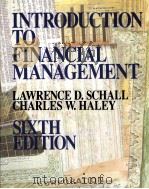《INTRODUCTION TO SECURITY SIXTH EDITION》
| 作者 | ROBERT J.FISCHER GION GREEN 编者 |
|---|---|
| 出版 | 未查询到或未知 |
| 参考页数 | 537 |
| 出版时间 | 没有确切时间的资料 目录预览 |
| ISBN号 | 0750698608 — 求助条款 |
| PDF编号 | 811868928(仅供预览,未存储实际文件) |
| 求助格式 | 扫描PDF(若分多册发行,每次仅能受理1册) |

PART I Introduction1
1Origins and Development of Security3
Security in England3
Feudalism and Security3
Post-Norman Reforms4
Exploration and Change5
The Eighteenth Century5
The Impact of Industrial Expansion7
Sir Robert Peel and the "Bobbies"8
Security in the United States8
Development of Private Security9
Crime Trends and Security12
Growth of Private Security16
Growing Pains and Government Involvement16
The Hallcrest Reports19
A New Professionalism20
A New Philosophy21
Review Questions23
References23
2 Career Opportunities in Loss Prevention25
Factors Increasing Security Opportunities25
The Security/Loss-Prevention Occupation26
Security Manager27
Bodyguard28
Private Investigators30
Consultants30
Opportunities in Industry31
Opportunities in Retail31
Opportunities in Health Care32
Airport and Airline Security32
Hotel Security33
Campus Security33
Banking Security34
Security Services34
Locksmithing35
Technology Experts35
Computer Security35
Conclusion37
Review Questions37
References37
3 Security Education, Training, Certification, andRegulation39
A Historical Perspective40
Adequacy of Private Security Training40
Proposed Federal Regulation44
The Role of Higher Education46
Training49
Certification and Regulation52
Regulation52
Certification54
Private Security Training and Education55
Magazines and Periodicals55
Conclusion56
Review Questions58
References58
Appendix 3ASecurity Officer Training State by State61
Appendix 3B Security Journals, Magazines, and Newsletters69
PART II The Security Function73
4 Defining Security's Role75
What Is Private Security?75
Security Hazards77
Security Functions78
Security Services79
Guard Services80
Patrol Services80
Consulting Services81
Investigative Services81
Alarm Response Services82
Armored Delivery Services82
Other Services83
Contract versus Proprietary Services84
Advantages of Contract Services85
Advantages of Proprietary Guards89
Deciding on a Contract Security Firm90
Private Security and Public Law Enforcement96
Complementary Roles99
Review Questions100
References1
5 The Proprietary Security Organization103
Determining the Need103
Security's Place in the Organization104
Definition of Authority108
Levels of Authority109
Reduced Losses and Net Profit110
Nonintegrated Structures110
Relation to Other Departments111
The Security Manager's Role112
Organizing the Security Function113
Planning114
Establishing Controls115
Organizing the Security Department115
Hiring Security Personnel118
Supervision121
Leadership123
Implementation of Security124
Departmental Evaluation124
Review Questions125
References126
6 Security and the Law127
Security, Public Police, and the U.S. Constitution128
Sources of Law129
Common Law129
Case Law130
Statutory Law130
The Power of Security Personnel131
Classes of Crimes131
Felonies132
Private Security Powers133
Arrest133
Detention137
Interrogation138
Search and Seizure140
Exclusionary Rule141
Use of Force142
Civil Law: The Controller for Private Security144
Tort Law: Source of Power and Limits144
Security and Liability149
Duty to Protect from Third-Party Crime150
Nondelegable Duty151
Imputed Negligence152
Criminal Liability154
The Courts155
The Procedure156
The Trial150
Appeal159
Development of Case Law160
Legal Research160
Review Questions162
References162
PART III Basics of Defense165
7 Risk Analysis and the Security Survey167
Risk Management168
Threat Assessment169
The Security Survey169
The Facility172
General Departmental Evaluations174
Personnel Department175
Accounting175
Data Processing177
Purchasing178
Shipping and Receiving179
Miscellaneous179
Report of the Survey179
Operational Audits and Programmed Supervision180
Probability181
Criticality182
The Probability/Criticality/Vulnerability Matrix183
Alternatives for Optimizing Risk Management186
The Cost-Effectiveness of Security187
Periodic Review188
Security Files188
Review Questions189
Reference189
8 The Outer Defenses: Building and Perimeter Protection190
Barriers, Fences, and Walls191
Barriers191
Fences192
Walls195
Gates and Other Barrier Breaches195
Padlocking196
Personnel and Vehicle Gates196
Miscellaneous Openings196
Barrier Protection197
Clear Zone197
Inspection197
Hydraulic Defenses198
Fence Protection Devices198
Inside the Perimeter199
Parking200
Surveillance200
Lighting200
Types of Lighting202
Types of Equipment203
Maintenance206
Perimeter Lighting206
Gates and Thoroughfares207
Other Areas208
General208
Planning Security209
Review Questions210
References210
9 Interior and Exterior Security Concerns211
Buildings on or as the Perimeter211
Windows and Doors211
Windows212
Doors214
Locks and Keys216
Attacks against Locks216
Locks as Delaying Devices216
Latches and Bolts217
Keying Devices and Systems218
Removable Cores220
Keying Systems222
Rekeying222
Key Control223
Locking Schedules224
Other Operating Mechanisms for Access Control224
Locking Devices228
Roofs and Common Walls229
Surveillance Devices230
Planning for a Surveillance System234
Old Construction236
New Construction236
Security at the Building Design Stage237
Security Principles in Design238
Review Questions238
References239
10 The Inner Defenses: Intrusion and Access Control240
Doors to Sensitive Areas241
Office Area Doors242
Traffic Patterns242
Traffic Control243
Visitors243
Employee Identification244
Pass Systems245
Package Control245
Files, Safes, and Vaults246
Files247
Safes247
Vaults249
Container Protection250
Continuing Evaluation250
Inspections251
Guard Patrols251
Alarms252
Kinds of Alarm Protection253
Alarm Sensors254
Alarm Monitoring Systems265
Cost Considerations266
Conclusion266
Review Questions267
References267
11 Fire Protection, Safety, and Emergency Planning268
Fire Prevention and Protection269
Vulnerability to Fire269
The Nature of Fire270
Byproducts of Fire271
Classes of Fire272
Extinguishers272
Fire Alarm Signaling Systems275
Fire Alarm Sensors276
Automatic Sprinkler Systems277
Education in Fire Prevention and Safety277
Employees in Firefighting278
Evacuation280
Safety and Loss Control282
OSHA Standards283
Setting Up the Safety Program284
Assessment of the Safety Program284
Finding the Causes of Accidents286
Managing the Safety Operation290
Emergency Planning292
Types of Emergencies292
Emergency Personnel and Equipment Records294
Elements of the Emergency Plan294
Security Responsibilities295
Conclusion296
Review Questions297
References297
12 Internal Theft Controls298
What Is Honesty?300
The Dishonest Employee301
The Theft Triangle301
Danger Signs302
What Employees Steal303
Methods of Theft304
Management Responsibility in Loss Prevention305
The Contagion of Theft306
Moral Obligation to Control Theft307
Program for Internal Security307
Need for Management Support307
Communicating the Program308
Continuing Supervision308
Program Changes309
Violations309
Procedural Controls310
Auditing Assets310
Separation of Responsibility312
Promotion and Rotation312
Access to Records313
Forms314
Computer Records/Electronic Mail and Funds Transfer/Fax314
Purchasing315
Payroll316
Accounts Payable317
General Merchandise318
The Mailroom320
Trash Removal320
When Controls Fail320
Undercover Investigation320
Prosecution321
Discharging the Thief322
Borderhne Cases323
Review Questions323
References323
13 Personnel Policies for Internal Security325
Human Resource Screening325
Employment History and Reference Checking326
Backgrounding335
Integrity and Lie Detection Tests335
Americans with Disabilities Act339
Drug Screening344
Other Screening Options344
Hiring Ex-Convicts and Parolees344
Morale345
Employee Assistance Programs346
Continuity of the Screening Program346
Review Questions347
References347
14 Insurance349
The Value of Insurance in a Total Loss-Prevention Program350
Types of Insurance350
Fidelity Bonds350
Surety Bonds353
Storekeepers' Burglary and Robbery Policies and Mercantile Open-Stock Burglary Policies354
Federal Crime Insurance354
3-D Policies355
Insurance against Loss of Use and Extra Expense Coverage356
Kidnap and Ransom Insurance356
Fire Insurance357
Business Property Insurance357
Liability Insurance357
Workers' Compensation Insurance357
Portfolio Commercial Crime Coverages357
Insuring against Crime358
Insuring Property359
Evaluating Risk359
What Is Covered360
How Much Insurance?361
Review Questions362
References362
15 Retail Security363
Shoplifting366
Extent of Shoplifting366
Methods of Shoplifting367
Who Shoplifts368
Detecting the Shoplifter369
Preventive Measures371
Arrest375
Prosecution376
Checks and Credit Cards376
Nature of a Check377
Checks and the Retailer378
Types of Checks379
Returned Checks380
Check Approval381
ID Equipment and Systems384
Store Policy384
Internal Theft385
Methods of Theft385
Controls388
Civil Recovery390
Review Questions391
References391
16 Cargo Security393
The Role of Private Security394
Accountability Procedures395
Invoice System395
Separation of Functions396
Driver Loading396
Theft and Pilferage397
Targets of Theft397
Pilferage397
Deterring Pilferage398
Large-Quantity Theft399
Removal of Goods400
Disposal of Stolen Goods400
Terminal Operations401
Surveillance401
A Total Program402
Planning for Security402
Controlled, Limited, and Exclusion Areas402
Pass Systems403
Vehicle Control403
Other Security Planning404
Security Surveys404
Inspections405
Education405
Cargo in Transit405
The Threat of Hijacking405
Personnel Qualifications406
Procedures on the Road406
Seals407
Suggested Sealing System and Procedures410
Introduction410
Ordering and Storage410
Outbound Recording410
Application411
Gate Procedures411
Broken Seals412
Seal Removal and Inbound Recording412
Supplementary Procedures412
High-Security Seal Locks413
Padlocks413
Trailer Kingpin Locks414
Review Questions415
References415
17 Computer Security416
Types of Computer Systems418
Microcomputers419
Workstations420
Minicomputers420
Mainframes420
Supercomputers421
Networks421
Local Area Networks421
Wide Area Networks422
The Internet422
The Need for Computer Security423
Computer Crimes423
Classic Methods for Committing Computer Crimes428
Federal Computer Legislation431
Profiling Criminals431
Typical Profile of a Computer Criminal432
Computer Systems Protection432
Disaster-Recovery Planning433
Identification and Access Control of Software and Data437
Encryption439
Physical Security439
Review Questions442
References442
18 Specific Security Threats447
Economic/White-Collar Crime447
Definitions448
Impact450
Burglary and Robbery450
Burglary451
The Attack451
Robbery454
Bombs and Bomb Threats460
Telephone Operator's Response461
Search Teams461
Evacuation463
Labor Disputes464
Terrorism465
Executive Protection468
Espionage469
Piracy471
Review Questions471
References472
19 Workplace Violence: Prevention and Intervention474
Threat474
Harassment474
Attack475
Sabotage475
The Phenomenon of Workplace Violence475
The Work Environment and Violence478
Profiling Violent Behavior480
Basic Levels of Violence482
Preventing Workplace Violence483
The Violence Intervention and Contingency Team483
Perpetrators' Rights485
Intervention Strategy486
Intervention Education487
The Intervention488
Review Questions490
References490
20 Drugs in the Workplace491
Impact of Drug Use493
Theft493
Productivity, Quality Control, Accidents, and Injuries493
Absenteeism and Turnover Rate494
Personal Problems495
Drug Testing495
Spotting Drug Use498
Crack Cocaine499
Cocaine499
Other Methods499
The Components of a Comprehensive Substance Abuse Program499
Preemployment Drug Testing502
Postemployment Drug Testing502
Review Questions503
References503
21Security: Its Problems, Its Future505
Private Security Resources506
Interaction and Cooperation506
Limitations of Security507
Trends508
The Future510
Technology510
Management511
Theft512
Education and Professionalization512
Certification and Standards512
Conclusion513
Review Questions513
References513
Index515
《INTRODUCTION TO SECURITY SIXTH EDITION》由于是年代较久的资料都绝版了,几乎不可能购买到实物。如果大家为了学习确实需要,可向博主求助其电子版PDF文件。对合法合规的求助,我会当即受理并将下载地址发送给你。
高度相关资料
-

- A CONCISE INTRODUCTION TO LOGIC SIXTH EDITION
- 1997 WADSWORTH PUBLISHING COMPANY
-

- Introduction to operations research Sixth Edition
- 1999 China Machine Press
-

- INTRODUCTION TO FINANCIAL MANAGEMENT SIXTH EDITION
- 1991 MCGRAW-HILL,INC.
-

- INTRODUCTION TO CRIMINAL JUSTICE SIXTH EDITION
- 1993 WEST PUBLISHING COMPANY
-

- AN INTRODUCTION TO LAW SIXTH EDITION
- 1991 THE LAW BOOK COMPANY LIMITED
-

- INTRODUCTION TO EUROPEAN SOCIAL SECURITY LAW SECOND EDITION
- 1998 KLUWER LAW INTERNATIONAL
-

- AN INTRODUCTION TO ELECTROCARDIOGRAPHY SIXTH EDITION
- 1983 FIRST P.G.ASIAN ECONOMY EDITION
-

- INTRODUCTION TO SOCIOLOGY SIXTH EDITION
- 1999 THE HARCOURT PRESS
-

- INTRODUCTION TO CHILD DEVELOPMENT SIXTH EDITION
- 1996 WEST PUBLISHING COMPANY
-

- INTRODUCTION TO PERSONALITY SIXTH EDITION
- 1999 HARCOURT COLLEGE PUBLISHERS
提示:百度云已更名为百度网盘(百度盘),天翼云盘、微盘下载地址……暂未提供。➥ PDF文字可复制化或转WORD




